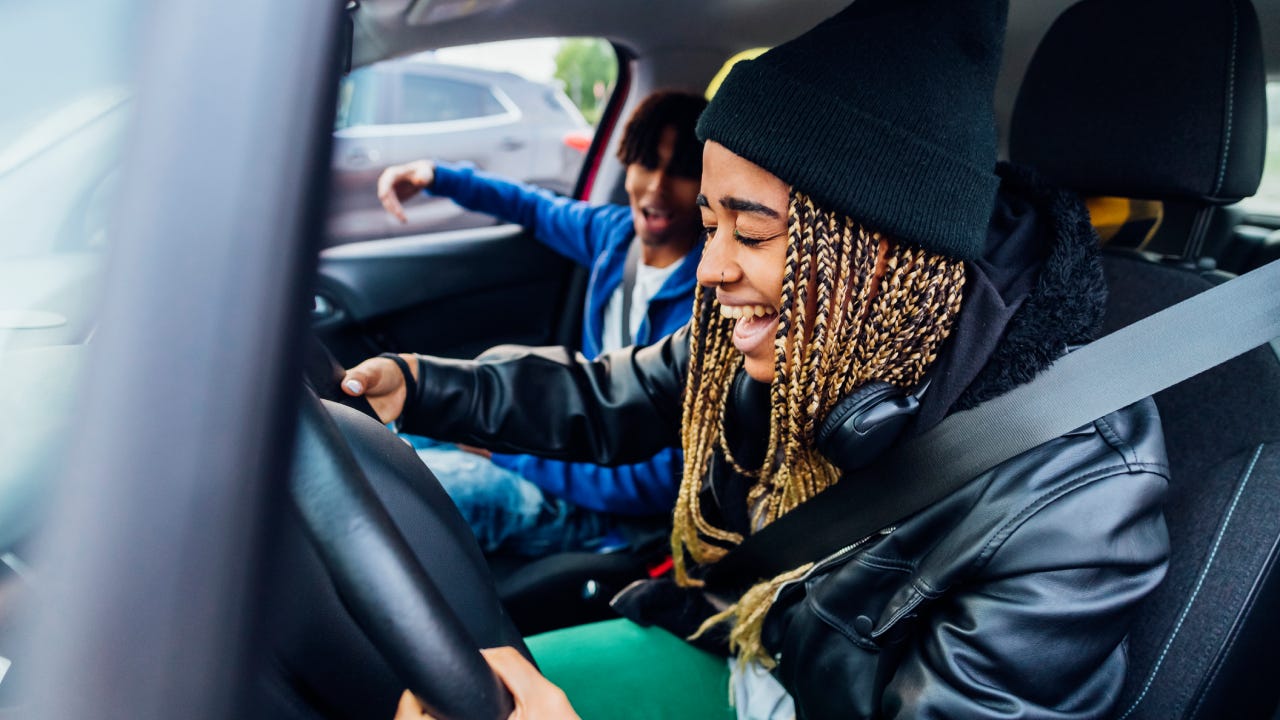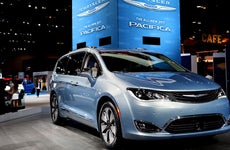Gen Z and car ownership

The Bankrate promise
At Bankrate, we strive to help you make smarter financial decisions. To help readers understand how insurance affects their finances, we have licensed insurance professionals on staff who have spent a combined 47 years in the auto, home and life insurance industries. While we adhere to strict , this post may contain references to products from our partners. Here's an explanation of . Our content is backed by Coverage.com, LLC, a licensed entity (NPN: 19966249). For more information, please see our .
Members of Generation Z are between the ages of 11 and 26. For many Gen Zers and Zennials, the micro-generation born between 1993 and 1998, the September 11th attacks, The Great Recession and the Covid-19 pandemic occurred during their most formative years. These watershed events may play a key role in why Gen Zers have delayed getting a driver’s license and being car owners more than any other generation. With inflation at an all-time high and less discretionary income, GenZ is happy with the simplicity of public transportation, at least for now. Data shows that when GenZers are car shopping, they can be cautious and thrifty, with an eye on the environmental impact.
Key takeaways
- Most adult Gen Zers were transitioning from college to the workforce when Covid-19 hit. Jobs were scarce and inflation rose, leaving many feeling less financially secure than past generations, according to a recent Bankrate survey.
- Gen Z is the first generation to grow up with access to private transportation in the palm of their hands. With ridesharing, bike-sharing and electric scooter options, many Gen Zers don't need to own a car and save money using app-based transportation options instead.
- Millennials also started driving and buying cars later than prior generations. Like Millennials, as more Gen Zers start careers and families, their need to own a car will likely increase.
Gen Z and cars: Data and observations
For many Gen Xers and Millennials, getting a driver’s license and cruising around town with too many friends piled into their mom’s car was the ultimate goal when they were teenagers. According to a recent Bankrate survey, 52% of Americans surveyed say owning a car is still part of the American dream. That said, why has there been such a decrease in car buying among this younger generation?
The Covid-19 Pandemic started impacting Americans’ day-to-day lives in March 2020 when most adult Gen Zers were transitioning from college to the workforce. Three years later, the economy has been slow to recover. Inflation and the rising cost of car ownership may discourage young adults from adding the financial burden of car loans and insurance to the already overwhelming cost of living.
- According to a Bankrate survey about homeowner affordability, 66 percent of Americans agree that adult children should gain financial independence between 18 and 21. However, this was the exact time frame when most Gen Zers moved back in with their parents due to pandemic job loss.
- About 80 percent of Gen Zers between the age of 20 to 25 had a driver’s license in 2020. This is a 10 percent drop compared to Millennials when they were the same age.
- A Bankrate poll from December 2022 found that 68 percent of Americans point to rising inflation as the primary reason why saving money for an emergency fund has become difficult. Vehicle repairs and buying a car are some of the most common unplanned expenses.
- While Gen Zers may prefer alternative modes of transport, such as ridesharing, they spend 20 percent of their salary on transportation.
- Only 25 percent of Gen Zers feel financially secure compared to other generations. However, 13 percent state they are not financially secure and feel they never will be, as opposed to 30 percent of Gen Xers.
Gen Z car buying trends and misconceptions
CDK Global, a retail technology provider, polled over 1,100 people across various generations. From this, we learn that Gen Zers are cautious buyers who value education—81 percent stated they prefer to take their time when deciding about a car. About 16 percent want a knowledgeable salesperson to walk them through the process and explain the paperwork in detail, compared to 12 percent for Millenials and 4 percent for Boomers.
This statistic rings true for Jim Kubicza, a Chevrolet salesperson from Connecticut who has noticed how car buying behavior has shifted over the past 15 years. “Younger buyers are more cautious with their credit,” he says. “I’ve noticed that first-time buyers tend to be out of college and usually on their career path. More buyers in this age range still bring a parent or parents with them when deciding. They want to make sure they are making the right choice.”
Here are a few other common misconceptions about Gen Zers (also known as Zoomers) and car buying:
- Despite how many desire to purchase a vehicle entirely online, 87 percent of Gen Zers head to the dealership for the final purchase after starting the initial research online. About 22 percent found shopping online more challenging than any other generation. This is likely due to Gen Z’s caution regarding financial matters and it is foreseeable that they will prefer buying a car online the second time around.
- Gen Z uses cash 69 percent more now than 12 months ago thanks to TikTok’s cash stuffing trend, per Credit Karma. Most Gen Zers still need car loans even when buying a used car and joined Millenials with having the highest car loan delinquency rates at the end of 2022.
- New cars depreciate by about 35 percent within the first three years. With the cost of new cars steadily increasing, Zoomers have placed their buying power behind older luxury vehicles that maintain a strong resale value.
- According to a survey from One Poll on behalf of Ally Financial, 72 percent of Zoomers and Millennials would consider purchasing an electric car, but 45 percent state that cost is a discouraging factor.
Money tip: Financial experts agree that most people shouldn't spend more than 10 percent of their income on car ownership. This includes all car ownership aspects, such as purchasing, taxes, gas and car insurance. J.D. Power reveals that using the 20/4/10 rule can help stop buyers from purchasing a vehicle beyond their means. Shoppers should make a 20 percent down payment, have a loan term no longer than four years and use 10 percent or less of their take-home income towards transportation expenses.'
Gen Z focus on public transportation
Gen Zers have more transportation options than any other generation before them, with micro-mobility as the latest affordable and eco-conscious option. Urban Zoomers are migrating to E-scooters and electric bikes due to affordability and practicality since many models are collapsible and store away easily in small apartments.
As of June 2023, there are 8,796 docking stations for bike share systems like Citi Bike. According to the Bureau of Transportation statistics, spending in the U.S. on bicycles and bicycle parts increased 620 percent, and docked bikeshare grew 42 percent between March 2020 and March 2023.
The use of public transportation in terms of buses, trains and subways has been on the decline since 2012. Zennials are more likely to take advantage of public transportation, while Zoomers prefer the ease of Uber and Lyft.
Other costs associated with owning a car
The majority of Gen Z who are of driving age automatically land in the high-risk category when it comes to car insurance. Drivers under the age of 25 have limited experience behind the wheel and usually pay the most for car insurance premiums. The national average cost of full coverage car insurance for 20-year-olds is $4,319 per year if they purchase their own car insurance policy and $3,149 if they are able to remain on their parents’ policy.
The cost of car ownership doesn’t stop there. Upon purchasing a vehicle, drivers pay for taxes and registration, which varies by state. Gas prices can fluctuate drastically, with some as high as $5 per gallon in 2022. Even newer vehicles need regular maintenance to promote their longevity, and AAA found that the average cost of car maintenance in 2022 was $10,728.
The future of car buying
The future of public transportation versus car ownership is uncertain. Subways, trains and buses are vital to urban life, but 45 percent of Americans do not have access to public transportation. Americans historically favor car ownership as they move away from cities and into suburban life. Gen Z may be cautious about buying online cars the first time, but this may not hold true for future purposes.
Zoomers seem to agree that electric cars and other environmentally-friendly transportation options are important to their futures. As more Gen Zers become adults with increased earning potential, the auto industry is paying close attention. Shifting their focus towards cost-effective and environmentally conscious cars may get more Gen Zers behind the wheel.
Frequently asked questions
-
-
Gen Zers, or Zoomers, were born between 1997 and 2012. They account for about 68.6 million of the U.S. population.
-
There are several factors to consider when buying a car, with affordability being one of the most important. Along with the purchase price, there are additional costs to vehicle ownership, such as gas, insurance and maintenance. Whether you buy online or at a dealership, inquire about gas mileage and the average yearly maintenance cost of any vehicle you are interested in. If insurance costs are a concern, buying a used car for cash may be a good option. Vehicles with lower actual cash value (ACV) might not need collision or comprehensive insurance, which can dramatically lower the price of car insurance.
-
Data from the United State Census Bureau shows that the bus is the most popular form of public transportation, with 3.6 million people taking the bus for daily commute. Subway or elevated rail comes in second with over 2.9 million passengers. Transport with the fewest annual passengers are ferryboats, which averaged 77,241 passengers in 2019.
-
The true cost of owning a car includes upkeep, gas, taxes, insurance and deprecation. Due to a rocky economy and rising inflation, car ownership costs have been steadily increasing. According to AAA, the average cost to own a car was $9,666 in 2021 and grew to $10,728 in 2022. The cost of taxes and gas are out of your control, but consulting with your insurance agent about discounts and other ways to lower your car insurance policy may help you save money.
-
Related Articles



